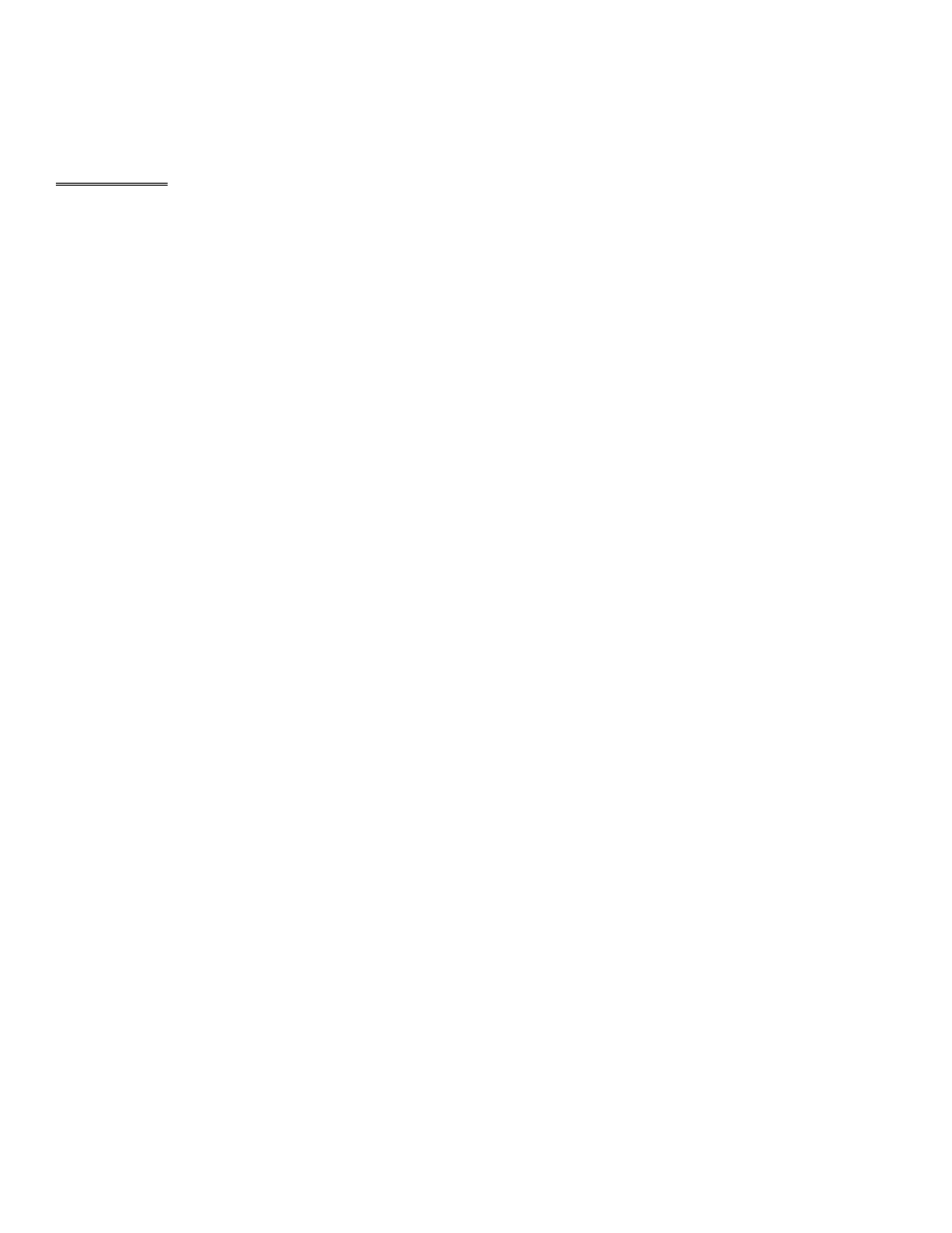7 noise – Measurement Computing CIO-DAS16/330 User Manual
Page 31

To hook up the CIO-AD analog inputs to a 4-20 mA transducer or signal source, place the shunt resistor across the plus
and minus terminals or signal wires of the 4-20 mA. After the resistor is in place, connect the analog input CH# HIGH to
the plus terminal and the analog input CH# LOW to the minus input.
If they are backward, the A/D reading will be 0 or minus volts. Reverse the connection.
6.7 NOISE
Noise is unavoidable in PC-based data acquisition systems. There is board induced noise which can be measured by
shorting an analog input to ground and taking a series of readings and plotting them in a histogram. There is EMI and
RFI induced noise along the path of the signal wires. There is also noise at the signal source itself. All these sources of
noise combine to create a region of uncertainty around the signal value.
Our objective here is to discover the sources of noise and discuss the means to reduce it.
6.7.1 SOURCES OF NOISE
The first source of noise is the board itself. Manufacturers of A/D boards quote component specifications in their data
sheets but rarely quote a system specification for general accuracy and noise. The reasons the system is not specified are
that the system specification would be less accurate than component specification and that system specifications must
also specify the conditions under which the specification was made. That means the PC, the PC's power supply and the
connection to the front end.
Take some very good components, put them on a circuit board and place that board in a PC and the system will be less
accurate than the individual components.
The system specification for the CIO-DAS16/330 is plus or minus 1 LSB. That means that if an analog input is tied to
ground and the CIO-DAS16/330 is on a bipolar scale, the reading will be 2048 90% of the time. The other 10% of the
readings will be 2047 and 2049, which is +/- count (LSB). This is actually not very different from the component
specifications.
You can verify this by grounding an analog input channel to LLGND and taking 1000 readings then plotting a histogram
of those readings.
If your histogram is not +/- 1 LSB, check the +/- 12V PC power supply voltages.
6.7.2 SIGNAL WIRE NOISE
Signal wires, especially single-ended inputs, are subject to EMI and RFI, both of which can induce noise on the wires
carrying the transducer signal to the CIO-AD board. Fortunately, signal wire noise is often localized and can be reduced
by repositioning the signal wire run, shielding the wires and using twisted-pairs.
To check for signal wire noise, first, short analog channel 0 to low level ground at the connector and take 10,000 samples
and plot the histogram. This is the best the signal can be and is what you will try to achieve with the signal wires in
place.
After you have an ideal case histogram, remove the short between analog input 0 and low level ground. Attach the signal
wires to the CIO-AD board inputs and run them to the sensor. Do not connect the sensor yet, just short the analog
input(s) to LLGND.
Take data for the histogram and compare it to the best case data taken previously. If it shows noise, you can try to
eliminate the noise by doing the following:
O Move the signal wires, trying to locate a 'quiet' run.
O Use a shielded twisted pair as the signal wire. Attach the shield at the PC only. If the shield is attached at both
the PC and the sensor it may create a ground loop and add to signal interference.
27
